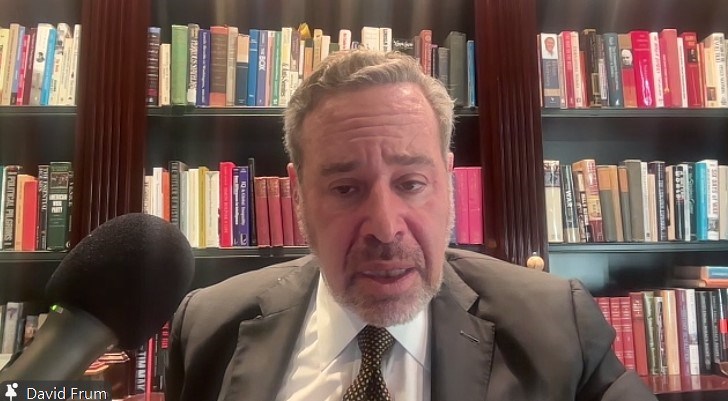Pundits are weighing in on how the Nov. 5 U.S. election results will impact Canadian businesses.
With one week to go until votes in that contest start to be counted, media commentator, senior editor at The Atlantic and former U.S. president George W. Bush speechwriter David Frum today virtually addressed the Business Council of British Columbia in a 90-minute session that included a speech and a question-and-answer session.
Canadians, he said, will face challenges with the new U.S. government regardless of who wins – particularly when it comes to trade.
That is because both Democratic candidate Kamala Harris and Republican candidate Donald J. Trump are seen to be more protectionist than are leaders who have headed U.S. administrations through the past few decades.
The risk of higher tariffs is steeper if Trump wins, Frum said.
Trump has said often that he would like to slap a 10-per-cent tariff on all imported goods, and a 60-per-cent tariff on Chinese goods. Sometimes in speeches he has said that he would like to go much further, such as having a 20-per-cent tariff on all countries other than China.
“The most protectionist administration since World War Two was Donald Trump's, but the second-most protectionist has been [current U.S. president] Joe Biden's,” Frum said.
“Canadians have to worry whether Joe Biden's vice-president [Harris] will continue this tradition or this practice.”
Harris has branded Trump’s plan to hike tariffs as the “Trump tax” – rhetoric that may mean she plans to be less protectionist than her rival.
The talk about tariffs scares Vancouver-based manufacturers who make products in China and sell at least some of them in the U.S.
Storkcraft CEO Adam Segal, for example, told BIV earlier this week that he reflects often about the spectre of higher tariffs because it would likely hurt his business, which makes many products in China.
“The US. doesn't have the infrastructure to make products at the prices we need and at the volumes we need, but we are starting some U.S. production soon for one or two categories,” said Segal, whose company makes and sells cribs and other baby furniture, such as rocking chairs.
Frum said U.S.-imposed tariffs will likely result in retaliatory tariffs and higher consumer prices worldwide.
“The consumer is paying,” he said. “And not just the consumer because everything is a component of something.”
Higher prices for component parts would increase manufacturing costs for businesses, resulting in higher priced goods even before tariffs are placed on the completed products.
Disingenuously or not, Trump has said that when he levies tariffs on other countries, those nations pay the tariffs.
“Trump doesn't understand any of this,” Frum said. “And many of the people around him are happy not to understand because it's their way of getting buy-in to larger tax cuts. If Trump thinks he's going to get the revenue back from tariffs, then he may agree to large tax cuts.”
He also warned not to expect any quick fix to the two countries' long-running softwood-lumber trade dispute.
"Softwood lumber, I think, it's just like the 100-Years War, and [the] softwood lumber [issue] is driven by various kinds of legal disputes that have moved outside the power of the president to solve," Frum said. "It may just genuinely be an unsolvable problem that can only be managed."
BIV asked Frum how he thought the tariffs and retaliatory responses would affect currencies.
His response was essentially that a wide range of factors impact currency values, so it is complicated and unclear.
“An American president cannot say, ‘I want a stronger [or weaker] dollar,’ and get it,” Frum said.
“It’s not a linear line. It’s not that you do one thing.”
Other analysts have speculated that rising tariffs would push down the Canadian dollar.
TD Bank economist Marc Ercolao, for example, wrote an Oct. 24 note that suggested that a new 10-per-cent U.S. tariff on Canadian imports, and a retaliatory 10-per-cent tariff on U.S. exports to Canada, could reduce Canadian exports by nearly five per cent by early 2027.
“As the output gap widens, the Bank of Canada may be forced into additional interest-rate easing, to the tune [of] 50–75 basis points, widening the spread to U.S. rates and putting downward pressure on the Canadian dollar.”
The Canadian dollar this week has been trading under the US$0.72 mark, at a level that has been a base low for the dollar for many years.
Canadian businesses benefit when there is a low loonie if they have expenses in Canadian dollars and revenue in U.S. dollars.
The effect of any eventual Trump tariffs, however, would likely wipe out any currency benefits and then some.
“There's an old joke: the Canadian says ‘the Americans are our best friend, whether we like it or not,’” Frum said.
“It's a complicated relationship.”



